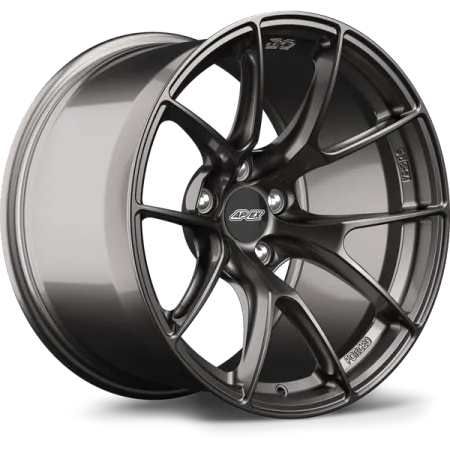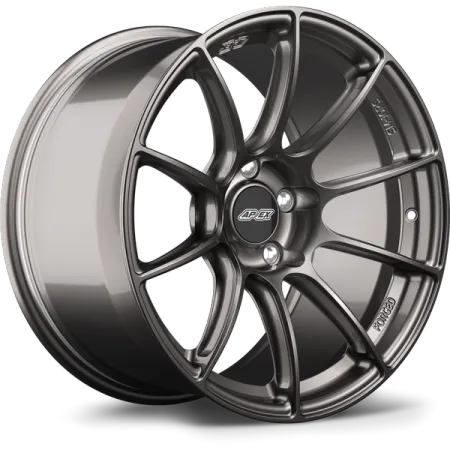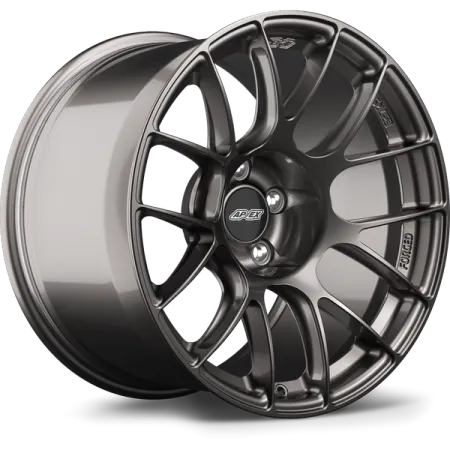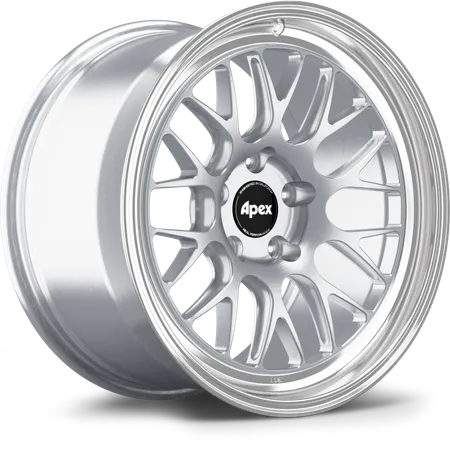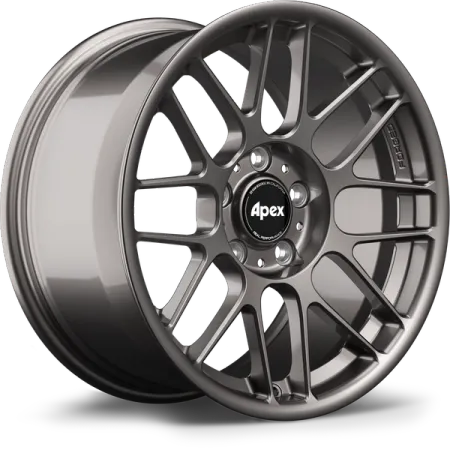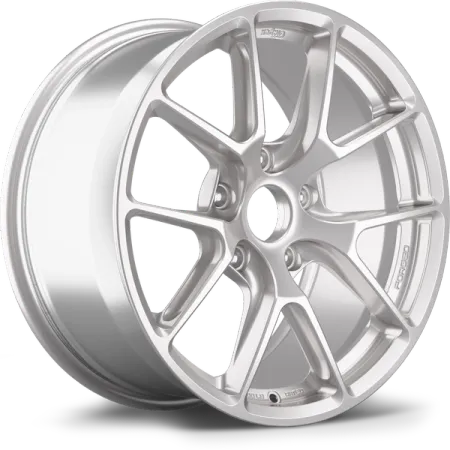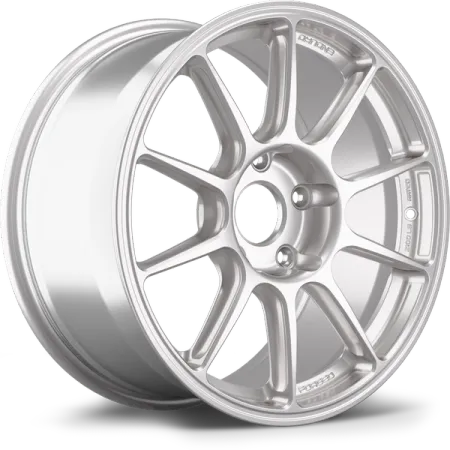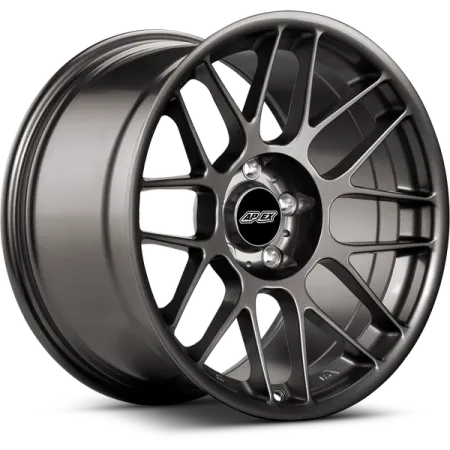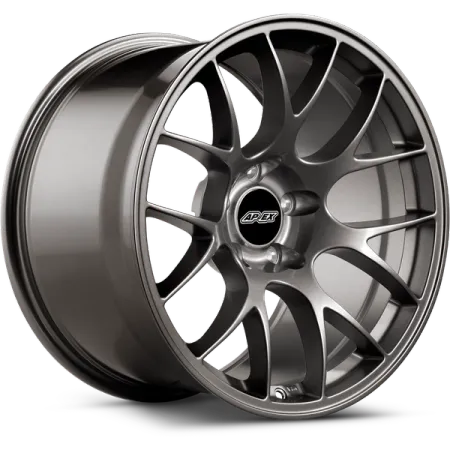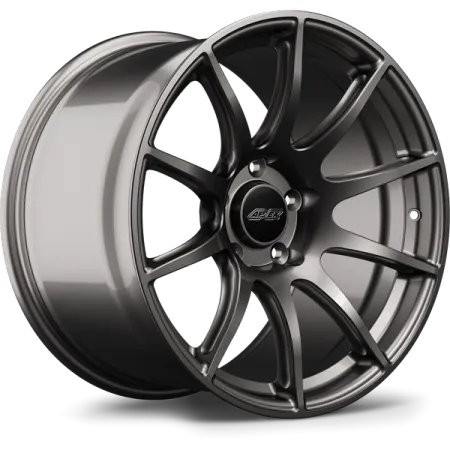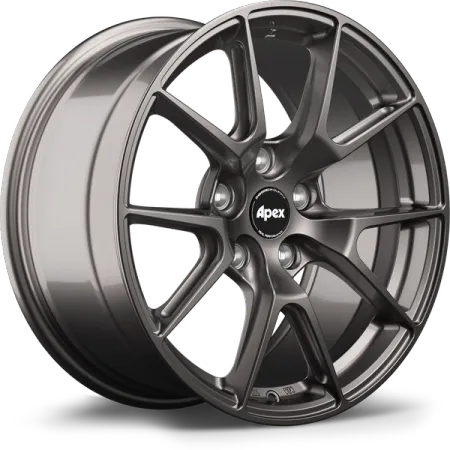Are you looking for the perfect wheel fitment for your 2001-2006 BMW E46 M3? Our BMW E46 M3 Fitment Guide is the #1 resource for identifying the best wheel and tire fitments along with the suspension changes and other mods needed to run wider wheels and tires for increased performance. Whether you have a Base M3, a competition package car, or even a rare CSL, Apex wheels offer a number of options that suit your goals. From visually aggressive stance oriented concave fitments to form over function pure track setups, Apex E46 M3 wheels have become the standard no matter what wheel fitment you’re trying to achieve. Our Forged wheels offer the ultimate in performance with options like our ARC-8RT, ML-10RT, VS-5RS, EC-7RS, and SM-10RS. Our Flow Formed designs have historically been our most popular models offering affordable and classic fitments in our ARC-8, EC-7, and SM-10 designs. Looking for fitment advice for your Non-M3 E46 3 series? Head over to our BMW E46 3 Series Wheel & Tire Fitment Guide.
OEM+ Wheel Fitment
Easy upgrades for street-driven cars
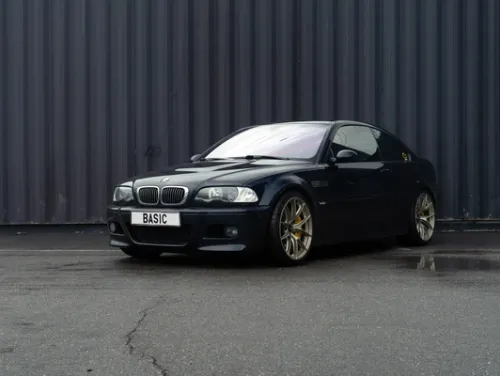 BMW M3 E46
BMW M3 E46 BMW M3 E46
BMW M3 E46 BMW M3 E46
BMW M3 E46 BMW M3 E46
BMW M3 E46 BMW M3 E46
BMW M3 E46 BMW M3 E46
BMW M3 E46
- 1 / 2
These bolt-on wheel fitments are ideal for enthusiasts enjoying their car day-to-day on the street, and they are typically paired with all-season or performance-oriented summer tires. These wheel and tire configurations will improve the appearance and performance of the car without requiring modifications or adjustments to the factory alignment. Just bolt-on and enjoy!
While these wheel fitments can be used for track days and AutoX, performance will be left on the table. Drivers that prioritize performance should review our Performance Street & Track section below.
Wheels
- Front Wheel Size: 18x9" ET30 or ET31
- Rear Wheel Size: 18x9" ET30 or ET31
- Available in: ARC-8, ARC-8RT, EC-7, EC-7RS, FL-5, ML-10RT, SM-10, SM-10RS, VS-5, VS-5RS
Tires
- APEX Staff Pick:
- Front Tire Size: 255/35-18
- Rear Tire Size: 255/35-18
- Direct fit.
- With certain tire brands and low ride heights, front fender liner rubbing may occur.
- Rear 12mm spacers recommended for aesthetics. The effective rear offset of ET18 or ET19 gives you the look of a more flush staggered fitment while retaining the ability to rotate tires front-to-rear.
Wheels
- Front Wheel Size: 18x8.5" ET35, ET38, ET40
- Rear Wheel Size: 18x9.5" ET22
- Available in: ARC-8, ARC-8RT, EC-7, SM-10, ML-10RT, VS-5, VS-5RS
Tires
- APEX Staff Pick:
- Front Tire Size: 235/40-18
- Rear Tire Size: 265/35-18
- Direct fit.
- With certain tire brands and low ride heights, front fender liner rubbing may occur.
Wheels
- Front Wheel Size: 19x8.5" ET35
- Rear Wheel Size: 19x9.5" ET22
- Available in: ARC-8, EC-7, SM-10, VS-5RS
Tires
- APEX Staff Pick:
- Front Tire Size: 235/35-19
- Rear Tire Size: 265/30-19
- Direct fit.
- With certain tire brands and low ride heights, front fender liner rubbing may occur.
Aggressive Street Wheel Fitment
Aggressive fitments focused on appearance
 BMW M3 E46
BMW M3 E46 BMW M3 E46
BMW M3 E46 BMW M3 E46
BMW M3 E46 BMW M3 E46
BMW M3 E46 BMW M3 E46
BMW M3 E46 BMW M3 E46
BMW M3 E46
- 1 / 4
Ideal for the driver who wants to fill out the wheel wells with the widest possible rubber and/or perfectly flush offsets. These fitments are sometimes direct bolt-on, but often times require small spacers, negative camber, or rolled fenders for the sake of dialing in the perfect blend of function and form. Larger diameter wheels are commonly featured.
Narrower tire sizes relative to wheel width are more common here to help move the tire sidewall away from the fenders with more aggressive offsets. Street-oriented all-season and summer tires are popular options.
Wheels
- Front Wheel Size: 18x9" ET30
- Rear Wheel Size: 18x10" ET25
- Available in: ARC-8, ARC-8RT, EC-7, EC-7RS, SM-10, ML-10RT, SM-10RS, VS-5, VS-5RS
Tires
- APEX Staff Pick:
- Front Wheel Size: 245/40-18
- Rear Wheel Size: 275/35-18
- With certain tire brands and low ride heights, front fender liner rubbing may occur.
Wheels
- Front Wheel Size: 18x9.5" ET35
- Rear Wheel Size: 18x10.5" ET22
- Available in: ARC-8, ARC-8RT, EC-7, EC-7RS, SM-10, ML-10RT, SM-10RS, VS-5, VS-5RS
Tires
- APEX Staff Pick:
- Front Wheel Size: 245/40-18
- Rear Wheel Size: 275/35-18
- Front 5mm or larger spacers required with certain aftermarket suspensions. When spacers are added, front negative camber may be required.
- Rear negative camber and/or rolled fenders may be required.
- Tires will appear slightly stretched (see above photo).
- 265/35-18 front and 285/35-18 rear tires may work with additional negative camber.
- With certain tire brands and low ride heights, fender liner rubbing may occur.
- Wider Alternative:
- Front Wheel Size: 265/35-18
- Rear Wheel Size: 285/35-18
- Front 5mm or larger spacers required with certain aftermarket suspensions. When spacers are added, front negative camber will be required.
- Additional negative camber recommend front and rear
- Rolled rear fenders recommended
- With certain tire brands and low ride heights, fender liner rubbing may occur.
Wheels
- Front Wheel Size: 18x9.5" ET22
- Rear Wheel Size: 18x10.5" ET22
- Available in: ARC-8, ARC-8RT, EC-7, EC-7RS, ML-10RT, SM-10, SM-10RS, VS-5, VS-5RS
Tires
- APEX Staff Pick:
- Front Wheel Size: 245/40-18
- Rear Wheel Size: 275/35-18
- At least -2.5º of front negative camber required.
- Rear negative camber and/or rolled fenders may be required.
- Tires will appear slightly stretched (see above photo).
- With certain tire brands and low ride heights, fender liner rubbing may occur.
- Wider Alternative:
- Front Wheel Size: 265/35-18
- Rear Wheel Size: 285/35-18
- Additional negative camber recommend front and rear
- Rolled rear fenders recommended
- With certain tire brands and low ride heights, fender liner rubbing may occur.
Wheels
- Front Wheel Size: 19x9" ET28 or ET30
- Rear Wheel Size: 19x10" ET25
- Available in: ARC-8, ARC-8RT, EC-7, EC-7RS, ML-10RT, SM-10, SM-10RS, VS-5, VS-5RS
Tires
- APEX Staff Pick:
- Front Wheel Size: 245/35-19
- Rear Wheel Size: 275/30-19
- With certain tire brands and low ride heights, front fender liner rubbing may occur.
Wheels
- Front Wheel Size: 19x9.5" ET33 or ET35
- Rear Wheel Size: 19x10.5" ET22 or ET25
- Available in: ARC-8, ARC-8RT, EC-7, SM-10, VS-5, VS-5RS
Tires
- APEX Staff Pick:
- Front Wheel Size: 245/35-19
- Rear Wheel Size: 275/30-19
- Front 5mm or larger spacers required with certain aftermarket suspensions. When spacers are added, front negative camber may be required.
- With certain tire brands and low ride heights, front fender liner rubbing may occur.
- Wider Alternative:
- Front Wheel Size: 265/30-19
- Rear Wheel Size: 285/30-19
- Front 5mm or larger spacers required with certain aftermarket suspensions. When spacers are added, front negative camber may be required.
- Additional negative camber recommend front and rear
- Rolled rear fenders recommended
- With certain tire brands and low ride heights, fender liner rubbing may occur.
Performance Street and Track Wheel Fitment
Wider fitments for enhanced performance
 BMW M3 E46
BMW M3 E46 BMW M3 E46
BMW M3 E46 BMW M3 E46
BMW M3 E46 BMW M3 E46
BMW M3 E46 BMW M3 E46
BMW M3 E46 BMW M3 E46
BMW M3 E46
- 1 / 10
Whether you enjoy spirited street driving or you are a weekend track warrior chasing lap times, these wheel & tire configurations are ideal for enthusiasts looking for a more dramatic improvement in performance and they are typically paired with performance-oriented summer tires or track-oriented R-compounds.
The suspension type, alignment settings, and tire brand/size can be changed accordingly to set the car up for either environment. While many of these wheel fitments can be run with the factory alignment, if you plan to track the car we highly recommended dialing in negative camber to improve handling and to extract the most performance and longevity out of your tires. See fitment notes under each tire configuration below to see if modifications are required.
Wheels
- Front Wheel Size: 17x9.5" ET35
- Rear Wheel Size: 17x9.5" ET35
- Available in: ARC-8, ARC-8RT, ML-10RT, VS-5, VS-5RS
Tires
- APEX Staff Pick:
- Front Tire Size: 255/40-17
- Rear Tire Size: 255/40-17
- 5mm or wider front spacers may be required with certain aftermarket suspensions that reduce inner clearance. See the suspension clearance section at the bottom of the guide.
- Rear 12mm spacers recommended for aesthetics. The effective rear offset of ET23 gives you the look of a more flush staggered fitment while retaining the ability to rotate tires front-to-rear.
Wheels
- Front Wheel Size: 18x9.5" ET35
- Rear Wheel Size: 18x9.5" ET35
- Available in: ARC-8, ARC-8RT, EC-7, EC-7RS, ML-10RT, SM-10, VS-5, VS-5RS
- Popular fitment
Tires
- APEX Staff Pick:
- Front Tire Size: 265/35-18
- Rear Tire Size: 265/35-18
- Requires at least -1.5 degrees of front negative camber dialed in via camber plates
- 5mm or wider front spacers may be required with certain aftermarket suspensions that reduce inner clearance. See the suspension clearance section at the bottom of the guide.
- Rear 12mm spacers recommended for aesthetics. The effective rear offset of ET23 gives you the look of a more flush staggered fitment while retaining the ability to rotate tires front-to-rear.
- With certain tire brands and low ride heights, front fender liner rubbing may occur.
- Wider Alternative:
- Front Tire Size: 275/35-18
- Rear Tire Size: 275/35-18
- Requires at least -2 degrees of front negative camber dialed in via camber plates
- 5mm or wider front spacers may be required with certain aftermarket suspensions that reduce inner clearance. See the suspension clearance section at the bottom of the guide.
- Rear 12mm spacers recommended for aesthetics. The effective rear offset of ET23 gives you the look of a more flush staggered fitment while retaining the ability to rotate tires front-to-rear.
- With certain tire brands and low ride heights, front fender liner rubbing is likely to occur.
Square 18" Street/Track Wheel Package: Coilover-friendly with minimal camber requirements. This fitment serves as a middle-ground between the ET22 and ET35 setups. It simulates running 7mm spacers on the ET35 setup, which makes it perfect for clearing nearly all aftermarket suspension setups without adding spacers.
Wheels
- Front Wheel Size: 18x9.5" ET28
- Rear Wheel Size: 18x9.5" ET28
- Available in: EC-7, VS-5RS
Tires
- APEX Staff Pick:
- Front Tire Size: 265/35-18
- Rear Tire Size: 265/35-18
- Requires at least -2 degrees of front negative camber dialed in via camber plates
- Rear 5mm spacers recommended for aesthetics. The effective rear offset of ET23 gives you the look of a more flush staggered fitment while retaining the ability to rotate tires front-to-rear.
- With certain tire brands and low ride heights, front fender liner rubbing may occur.
- Wider Alternative:
- Front Tire Size: 275/35-18
- Rear Tire Size: 275/35-18
- Requires at least -2.5 degrees of front negative camber dialed in via camber plates
- Rear 5mm spacers recommended for aesthetics. The effective rear offset of ET23 gives you the look of a more flush staggered fitment while retaining the ability to rotate tires front-to-rear.
- With certain tire brands and low ride heights, front fender liner rubbing is likely to occur.
Square 18" Track Wheel Package: When track days are more than just a hobby. Similar to the above, but this setup's lower ET22 offset means no spacers are required. The trade-off is a more aggressive front camber requirement. The camber required for this setup makes it very aggressive for street use. Tramlining may occur on grooved streets as a result.
Wheels
- Front Wheel Size: 18x9.5" ET22
- Rear Wheel Size: 18x9.5" ET22
- Available in: ARC-8, ARC-8RT, EC-7, EC-7RS, ML-10RT, SM-10, SM-10RT, VS-5, VS-5RS
Tires
- APEX Staff Pick:
- Front Tire Size: 265/35-18
- Rear Tire Size: 265/35-18
- Requires at least -3 degrees of front negative camber dialed in via camber plates
- With certain tire brands and low ride heights, front fender liner rubbing may occur.
- Wider Alternative:
- Front Tire Size: 275/35-18
- Rear Tire Size: 275/35-18
- Requires at least -3.5 degrees of front negative camber dialed in via camber plates
- With certain tire brands and low ride heights, front fender liner rubbing is likely to occur.
Wheels
- Front Wheel Size: 18x10" ET25
- Rear Wheel Size: 18x10" ET25
- Available in: ARC-8, ARC-8RT, EC-7, EC-7RS, SM-10, SM-10RS, SM-10RE, VS-5, VS-5RS, VS-5RE
Tires
- APEX Staff Pick:
- Front Tire Size: 275/35-18
- Rear Tire Size: 275/35-18
- Requires at least -3 degrees of front negative camber dialed in via camber plates
- With certain tire brands and low ride heights, front fender liner rubbing may occur.
Wheels
- Front Wheel Size: 17x9" ET30
- Rear Wheel Size: 17x10" ET25
- Available in: ARC-8, VS-5RS
Tires
- APEX Staff Pick:
- Front Tire Size: 245/40-17
- Rear Tire Size: 275/40-17
- Direct fit.
Wheels
- Front Wheel Size: 18x9" ET30
- Rear Wheel Size: 18x10" ET25
- Available in: ARC-8, ARC-8RT, EC-7, EC-7RS, ML-10RT, SM-10, SM-10RS, VS-5, VS-5RS
Tires
- APEX Staff Pick:
- Front Tire Size: 245/40-18
- Rear Tire Size: 275/35-18
- Direct fit.
Race Wheel Fitment
 BMW M3 E46
BMW M3 E46 BMW M3 E46
BMW M3 E46 BMW M3 E46
BMW M3 E46 BMW M3 E46
BMW M3 E46 BMW M3 E46
BMW M3 E46 BMW M3 E46
BMW M3 E46
- 1 / 2
Recommended for: This section is intended for W2W Club Racers or those subject to Class restrictions. This category prioritizes rules compliance and includes both staggered and square configurations to best suit each individual drivers priorities, goals and preferences for their vehicle. Motorsport-oriented suspension setups with aggressive negative camber specifications are par for the course here, unless class rules prevent such modifications. We are passionate about motorsports, and we’ve done our homework. Before developing wheels for a particular chassis we review class rules from popular racing organizations like SCCA, NASA, PCA, POC and more. To keep you competitive, we’ve included our recommended wheel fitments, and to keep you compliant, we’ve conveniently added class rules and regulations as they relate to wheels and tires.
Additional Factors: The following items should be considered when choosing a fitment from this category. See the lower portion of this guide for these articles.
- Square vs. Staggered
- How to Prevent Rubbing
- Will Your Suspension Clear?
- Will You Need Negative Camber?
- Wheel Diameter
- Brake Clearance
- Do you Plan To Compete in Classed Events?
Recommended Tires: In order to get the most performance out of the other modifications you've done that are required to use these fitments, these setups should only be used with aggressive tire compounds such as the Nitto NT01 or Hoosier R7.
Nitto NT01 (100TW) - The NT01 is one of the highest performing track day tires on the market and is available in all of the most popular sizes. This tire is not recommended for a daily driven car, or even for a car that is driven to and from the track. These tires will wear extremely quickly and are best used for cars that are trailered to and from events.
Hoosier R7 (40TW) - The Hoosier R7 tires are as close as you can legally get to a full-on racing slick. These tires are recommended for race and autocross ONLY. Due to the tread pattern, these tires are not recommended for any street use, even when driving to and from an event. The Hoosier R7 is developed for drivers who compete in road racing or time trials, where responsiveness and high levels of grip in hot & dry conditions are desirable. The R7 is not designed for damp or wet conditions. The R7 is a rewarding tire for the enthusiast looking for the fastest and most consistent lap times. The R7 provides extended wear for this treadwear rating due to the tire compound being a bit harder than the Autocross-only “A7” variant. If you are a racer and would like to see a new APEX wheel fitment, email us at expert@apexraceparts.com.
Race Class Rules
NASA German Touring Series (GTS) The NASA German Touring Series is comprised of six classes of German cars organized strictly based on power-to-weight ratios. This simple formula provides broad flexibility in both vehicle choice and in the modifications allowed (which include just about anything). The result is a broad range of modifications and extraordinarily close racing. There are no specific rules dictating wheel and tire sizes, but we've listed our recommendations below:
Staggered Setups
- Front: 18x9.5" ET22 // Rear: 18x10" ET25
- Available in: ARC-8, ARC-8RT, EC-7, EC-7RS, ML-10RT, SM-10, SM-10RS, VS-5, VS-5RS
- Front negative camber required.
- No spacers required.
- Front: 18x10" ET25 // Rear: 18x11" ET44
- Available in: ARC-8, ARC-8RT, EC-7, ML-10RT, SM-10RE, VS-5, VS-5RE, VS-5RS
- Front 5mm or larger spacers required with certain aftermarket suspensions.
- Rear 20mm or larger spacers and rolled/pulled fenders required to prevent fender arch rubbing.
- Front negative camber required.
Square Setups
- Front & Rear: 18x10" ET25
- Available in: ARC-8, ARC-8RT, EC-7, EC-7RS, ML-10RT, SM-10, SM-10RE, SM-10RS, VS-5, VS-5RE, VS-5RS
- Front 5mm or larger spacers required with certain aftermarket suspensions.
- Front negative camber required.
- Front & Rear: 18x11" ET44 with spacers
- Available in: ARC-8, ARC-8RT, EC-7, ML-10RT, SM-10RE, VS-5, VS-5RE, VS-5RS
- Front and rear 20mm or larger spacers required.
- Front and rear negative camber required.
- Front and rear rolled and/or pulled fenders or flares required to prevent fender arch rubbing.
Tire Options
All tires, whether DOT-approved or not, must be commonly available to all competitors from typical national retailers or directly from their respective manufacturers. Special compounds not available to the public are not permitted.
- Dry Staggered Hoosier R7 - Front: 275/30-18 // Rear: 305/30-18
- Dry Square Hoosier R7 - Front & Rear: 285/30-18 or 305/30-18
- Wet Staggered Hoosier DOT - Front: 275/30-18 // Rear: 305/30-18
- Wet Square Hoosier DOT (Wet) - Front & Rear: 275/30-18 or 295/30-18
SCCA Autocross Stock Class (SS) Rules Any type of wheel may be used provided it complies with the following:
1. Wheels must be the same width as stock. 2. Wheel offset must be +/- 7mm from stock. 3. Wheel diameter can be +/- 1" from stock. 4. Spacers are allowed as long as the final setup complies with the offset rule above.
Winter Wheel Fitment
Recommended for: Drivers who want a narrow, low-cost winter wheel & tire setup that will bolt-on without any additional modifications required. Whether you have an expensive set of street wheels to protect, or don't want to deal with visiting a shop for a changeover, having a second set of wheels with winter tires already mounted makes the process so much easier. Additional Factors: The following items should be considered when choosing a fitment from this category.
- Brake Clearance
Recommended Tires: This depends on the conditions in which you plan to drive the car.
Deep snow & near/below freezing temperatures: General Altimax Arctic 12 (studdable)
Some snow & near/below freezing temperatures: Michelin X-Ice Xi3 (if snow will often be encountered) Michelin Pilot Alpin PA4 (If snow will rarely be encountered)
Our Recommendation
Bolt-on Winter SetupThis winter setup can be used either with ice & snow tires or performance winter tires
- Front & Rear: 18x8.5" ET35, ET38 (ARC-8) or ET40 with 245/40-18 winter tires
- Available in: ARC-8, ARC-8RT, EC-7, ML-10RT, SM-10, VS-5, VS-5RS
- Direct fit.
Additional Resources
Available Wheel Designs
Forged Designs
Square vs Staggered Fitments

Should I use a square or staggered setup? Which one will give me more performance? How wide should I go?
While there is no definitive right or wrong answer to these questions, there are some key variables that will help you answer these questions for yourself. Drivetrain layout, power output, suspension setup, and alignment settings can all contribute to how your particular vehicle can take advantage of the distinct characteristics that each type of setup offers.
First of all, what's the difference?
Square Fitment: All four wheels are the same diameter, width, and offset. All four tires are the same size.
Staggered Fitment: All four wheels are the same diameter. Two wheels (typically the drive wheels) are wider.
It is possible to run a double-staggered (two wheels have a larger width and diameter) or a reverse-staggered fitment (front wheels have a larger width and/or diameter for brake clearance), and these setups only make sense in very specialized use cases.
Square Fitment Pros & Cons:
+ Tire Life & Running Costs: By allowing front-to-rear and left-to-right tire rotation, a square fitment will help you get the most miles out of your tires. By rotating your tires regularly, they'll last far longer and reduce operating costs. Track use and spirited driving will amplify these cost savings.
+ Handling: Equal tread width front and rear means the car will exhibit more neutral and balanced handling characteristics. This reduces or eliminates the tendency to understeer on a typical front-engined, rear-wheel-drive (FR) layout with a staggered fitment.
+ Simplicity: Buying wheels and tires is just easier when they are all the same size. Keeping a spare is easier since you know it will fit the front or the rear if needed.
- Rear Traction: Rear grip is not optimized since the rear tire size is limited to the widest size that fits on the front.
- Aesthetics: Only some may consider this a con. Rear fitment may not be as flush as the front. However, spacers can be used to push the rear wheels out for a more aggressive look.
Staggered Fitment Pros & Cons:
+ Rear Traction: By fitting a wider tire on the drive axle, you'll have more available traction in higher-horsepower vehicles. This is most useful in straight-line acceleration from a stop and when exiting a corner.
+ Aesthetics: Both the front and rear wheels can sit flush with the fenders without requiring the use of spacers.
+ Retain Factory Handling - Most RWD vehicles come with staggered fitments from the factory. By sticking with this layout you can retain the handling characteristics of the car that you're already familiar with.
- Tire Life & Running Costs: Tires cannot be rotated front-to-rear, so tire life will be reduced. This is more apparent during track/spirited driving.
How To Prevent Rubbing

How bad is rubbing, really? It depends on the severity. Minor rubbing is sometimes considered par for the course with the tradeoff being substantially increased performance as a result of a much wider wheel and tire setup. Major rubbing can be a big annoyance, and should definitely be dealt with. Our goal is to provide fitments that allow for wide, aggressive tires that will not rub under any driving conditions. Most tire rubbing occurs during suspension compression such as hard cornering or driving over large bumps. Every chassis has some room to go wider than the factory setup without additional modifications. However, when it comes to maximizing the potential of your chassis, you gotta pay to play. This means that in order to run those 18x10" ET25s up front with 275s, you're going to need to do some work. There are three main types of rubbing that can happen when pushing the limits of tire width.
Should You Use Spacers?

Reasons For Using Spacers
- To clear certain aftermarket suspension setups
- To clear certain aftermarket big brake kits
- To achieve a perfectly flush fitment with the fender arches
- To make a rotatable square setup fit like a staggered setup
When installed properly with the correct extended hardware, spacers are often the most cost-effective way to achieve a perfectly-dialed-in fitment; the alternative being expensive custom-offset wheels. What You Need To Know There are countless horror stories floating around about spacers, and we want to clear up the misconceptions. Always take the following things into consideration when installing spacers:
Spacer Quality - Do not buy the cheapest ones you can find. A spacer is the only piece of hardware between your wheel and the vehicle's hub. Machining errors are quite common with bargain-priced spacers. This can lead to an improper seat and ultimately spacer or hardware failure resulting in vehicle damage and injury.
Always Use Extended Hardware - We know it can be tempting to re-use your stock lug bolts with spacers. However, even a 3mm spacer will reduce the stock lug bolt thread engagement by 19%. 5mm spacers reduce it by 30%. This is a significant reduction in strength in one of the most-stressed components of your vehicle. Using the correct extended hardware ensures proper thread engagement and should be considered a requirement when installing spacers.
Ensure Proper Installation - Spacers can only be installed one way. This should be obvious, but first-time installers (both shops and owners) have been known to install 3mm or 5mm spacers backwards.
Ensure all wheel bolts or lug nuts are torqued to the manufacturer's recommended torque specification.
Before lowering the car on the ground, spin each wheel slowly by hand. This ensures that you're using the correct-length hardware which, if too long, can damage braking components located behind the hub. Check the inner clearance of the wheel and tire to the nearest suspension components and ensure at least 3mm of clearance. For the front wheels, turn the steering wheel lock-to-lock and check the clearances of the tire to the fender liners. Do this again once the car is on the ground with the suspension settled.
Will Your Suspension Clear?

High-Clearance Adjustable coilovers like JRZ, MCS, Öhlins TTX, TC Kline, Ground Control, and more.
Medium Clearance OEM Suspension (including M-Sport), OEM shocks with aftermarket lowering springs, aftermarket sport shock & spring kits, some aftermarket coilovers like BC Racing, and more.
Limited-Clearance Adjustable coilovers like KW (V1, V2, V3, Clubsport), ST (X & XTA), Öhlins R&T, height-adjustable sleeve kits from KW, and more
Why Is This Important?
Our goal is for the wheels, tires, and suspension to work harmoniously together to extract the best possible performance from the car without rubbing. If maximizing wheel and tire width is important to you, it is imperative to consider the form factor of your current suspension setup prior to purchasing a new set of wheels and tires. This is also an important factor to consider upon upgrading your suspension. While you may not have immediate plans to push the limits of wheel and tire width, we encourage you to plan for the future by choosing a setup that aligns with your future plans and goals for the car.

Taking a closer look at the E46 M3 shown in the photo above, we can clearly see how the overall suspension layout varies between the front and rear of the car. When comparing the differences in these two suspension configurations, it becomes clear as to why so much more emphasis is placed on front clearance as opposed to the rear. The factory BMW suspension consists of a coilover (coil spring over shock) design in the front, and a “divorced” spring and shock configuration in the rear. This “divorced” configuration places the springs inboard on the rear control arms, leaving ample clearance for a wider rear wheel and tire setup. A vast majority of enthusiasts choose to keep a divorced rear suspension configuration, even in cases where the car is being heavily modified for track work.
Will You Need Negative Camber?

Many enthusiasts are under the impression that negative camber is just a way to install ridiculously wide wheel and stretched tire fitments under their fenders – a way to get hellaflush status and Instagram fame. We, on the other hand, have lengthy camber discussions with our clients in regards to wheel and tire fitment, track preparation and all things related to squeezing the most out of their machine. During these conversations, we often discover that enthusiasts who are new to the sport carry a sour connotation with negative camber, and a general misunderstanding of the role it plays in the world of performance driving. It is true that aggressive amounts of negative camber can help you stuff those new, wider rollers under your car, but it happens to serve a greater purpose, one that is foundational in the world of Motorsports; tire bite. How much negative camber is enough? Too much negative camber will result in unpredictable handling and premature inner tire wear. Not enough negative camber will cause understeer and premature outer tire wear.
IN GENERAL, you can use the specs below to get yourself in the ballpark of what will work best for your car and driving style. There are other important variables such as spring rate, tire compound, aerodynamics, etc that will come into play, but these recommendations can serve as a starting point.
Learn more in our blog article, The Positives of Negative Camber.
Will Your Brakes Clear?

All of our wheels clear the OEM brakes of the vehicles they were intended for, usually with room to spare. We spend lots of time designing our barrels and spokes to clear as many aftermarket big brake kits as possible.
OEM Brakes These are typically the most generous in terms of wheel clearance. On the E46 there are no clearance issues with stock brakes (including Competition/CSL setups) on any of our recommended fitments.
Aftermarket Big Brake Kit There are many different types and sizes of aftermarket brakes available. We've tested many popular configurations and have listed them in the brake fitment table below.
Wheel Diameter - 17" vs 18" vs 19"

Generally speaking, we recommend the smallest possible diameter that clears the brakes. This minimizes weight, reduces wheel and tire costs, and has a very functional and performance-oriented look.
17" The lightest wheels we make. Clears all stock brake setups, but may limit upgrade options. Taller tire sidewalls can be used, which will improve ride quality and offer additional protection for the wheels against road hazards. Tire brands and sizes can often be limited, so check to ensure the sizes and compound you'll need are available.
18" Right in the middle. 18" APEX wheels clear nearly every brake upgrade option available for the E46 M3, and give you the best selection of tire brands, sizes, and compounds. Wheel & tire prices are slightly higher than 17" wheels, but typically far less than 19" wheels. Tire sidewall height is slightly smaller than 17" wheels and therefore ride quality and wheel protection are marginally reduced.
19" We get it. Sometimes larger wheels just look better. Brake clearance won't likely ever be an issue, and the 19" tire availability and selection grows more each day. A 19" wheel+tire weighs about the same as an 18" wheel+tire with the same overall rolling diameter, so weight is considered negligible between 18" and 19" setups. Wheels and tires are more expensive, and shorter tire sidewalls mean a more communicative ride (you'll feel the bumps) and less protection for the wheels.
Do You Plan to Compete in Classed Events?

Certain race classes such as NASA GTS3 and BMW CCA Stock Autocross require that specific wheel and tire sizes be used. Some classes have a range of specifications that work, while others require an exact size. Be sure to check with the appropriate organization to ensure your setup will comply with these rules. View our recommendations in the Race Fitments section above.
OEM Fitment Information
To fully understand what's going to change when you switch wheels, take a look at the OEM fitments the factory has equipped and compare them against your new setup. Hardware specs are listed for reference, no hardware changes are necessary when installing APEX wheels.
18" OE Style 67 Fitment

19" OE Style 67 Fitment

19" OE Style 163 Competition Package Fitment

19" OEM Style 163 M3 CSL Fitment

Still have questions?
Fill out our Fitment Recommendation form Call us: 925-245-0773 Email us: support@apexraceparts.com
